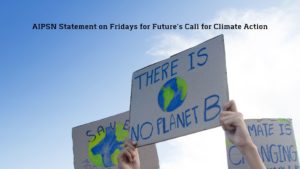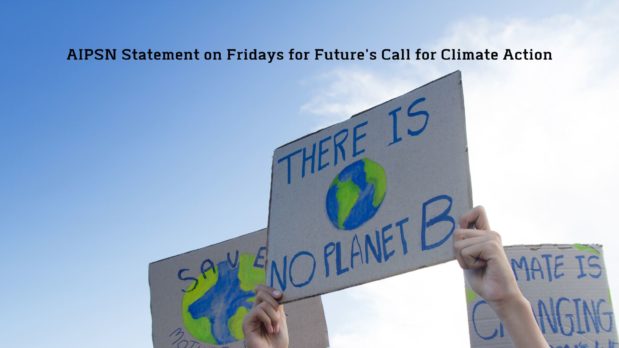Click here to read the statement in English , Hindi, Bengali, Ahomiya , Odiya
 Climate Strike Actions, mostly involving students, youth and related movements, have been taking place all over the world as part of the global ‘Fridays for Future’ campaign initiated by Swedish teenage activist Greta Thunberg in 2018. This year the selected date is Friday 23 September, 2022. The All-India Peoples Science Network is organizing activities all over the country on that day along with climate campaigners in other countries.
Climate Strike Actions, mostly involving students, youth and related movements, have been taking place all over the world as part of the global ‘Fridays for Future’ campaign initiated by Swedish teenage activist Greta Thunberg in 2018. This year the selected date is Friday 23 September, 2022. The All-India Peoples Science Network is organizing activities all over the country on that day along with climate campaigners in other countries.
‘Climate Strike’ actions this year have special significance because, perhaps more than in previous years, climate impacts have hit nations across the world like a sharp slap on the face, reminding us all of the serious consequences of ignoring climate change and the factors causing it. Heavy use of fossil-fuel based energy and other unsustainable economic activities have been releasing huge quantities of greenhouse gases (GHGs) into the atmosphere, particularly by the developed countries which are responsible for over 70% of accumulated atmospheric GHGs. There is mounting scientific evidence, notably in the 6th Assessment Report of the Inter-governmental Panel on Climate Change (IPCC) and in 3 Special Reports of IPCC in the past two years, that global average temperature rise is climbing steadily and that, even at the present level of 1.2 degrees C higher than in the industrial era, changes in climate and other impacts are occurring mush faster and with much greater intensity than earlier expected. As things stand today, despite all the emission reduction promises made by all countries in the landmark Paris Agreement in 2015 and as updated at the Glasgow Summit in 2021, the world is nowhere near limiting global temperature rise to 2 degrees C, leave alone the raised ambition of 1.5C. The world, especially people in particularly vulnerable island nations, least developed countries and developing countries in general, face an uncertain, bleak and dangerous future.
Many countries, including several developed countries, experienced severe climate impacts last year and then again, this year. There have been rare and heavy rains and floods in northern Europe over Germany, Belgium and stretching to the Balkans and Italy last year, completely taking by surprise the entire region which incurred huge losses in both property and human lives, as well as prolonged and severe heat waves and forest fires in the past two years, along with severe drought in Spain, Portugal and Italy. Scorching heat waves, long droughts and forest fires have also ravaged the US and even Canada, which saw temperatures touching 50C, and now experiencing prolonged drought and resultant water crisis in the South-Western USA.
We have all seen the horrendous floods in neighbouring Pakistan caused by what people have termed a “super monsoon” or “monsoon on streroids” with extreme rainfall, in some regions 3-5 times average rainfall, compounded by glacier melt resulting from an earlier heat wave, all together displacing over 33 million people and virtually inundating the whole country.
India, over the past several years, has been experiencing erratic monsoons, extreme rainfall events, severe flooding in Kerala and this year also in the Godavari and in the Brahmaputra badly affecting Assam. Extreme rainfall, often 300mm-500mm in a single day or, put another way, a whole month’s quota of rainfall in a few days, has caused complete inundation even of metropolitan cities such as Mumbai, Chennai, Hyderabad and, at the time of writing, India’s cyber-capital of Bengaluru apart from other towns and cities, exposing the thoroughly inadequate drainage system and the haphazard urbanization allowed hitherto which has blocked natural drainage lines and rivers such as the Mithi in Mumbai, the Adyar and Cooum in Chennai and so on.
Himachal Pradesh and Uttarakhand have been ravaged by extreme rainfall resulting in floods, landslides and destruction of infrastructure such as smaller dams and hydro projects, as well as large parts of small towns. These disasters have been compounded by unplanned and badly implemented construction of roads, dams and hydro projects, and expansion of urban settlements far beyond their carrying capacity, magnifying the impact of climate change.
In peninsular India, several States are experiencing serious coastal erosion, which will only worsen with the anticipated sea-level rise, and various harmful infrastructure and commercial projects on the coasts, destroying natural protective barriers such as mangroves. Unfortunately, even the Coastal Zone Regulations have been diluted, allowing such economic activities even as near as 50m from the coastline!
Latest data predict that large areas of all major coastal cities such as Mumbai, Kochi, Chennai, Vizag, Puri, Kolkata etc are in danger of being submerged under rising sea-levels made worse by high tides and storm surges. Numerous villages in the Sunderbans in West Bengal are facing sea-level rise, submergence and land subsidence, threatening people’s lives, habitat and livelihoods.
Through its ‘Climate Strike’ actions this year, the All India Peoples Science Network and its affiliated organizations seek to highlight these threats and rally the people to demand urgent action by the union and State Governments to combat climate impacts. It is notable that the government has devoted much attention to the international negotiations and has promised to reduce emissions from India as part of global efforts to combat climate change. However, the Government has not paid sufficient attention to climate impacts in India and has so far failed to initiate any serious effort towards adaptation and building resilience to climate impacts. It is widely known that many such actions would need to be taken up by the States. But given the imbalance between the Centre and the States in finances and in human resources and capabilities, it is imperative that the Union Government urgently launch a National Action Plan on Adaptation and Climate Resilience with full participation of State Governments, S&T Institutions and civil society organizations.
